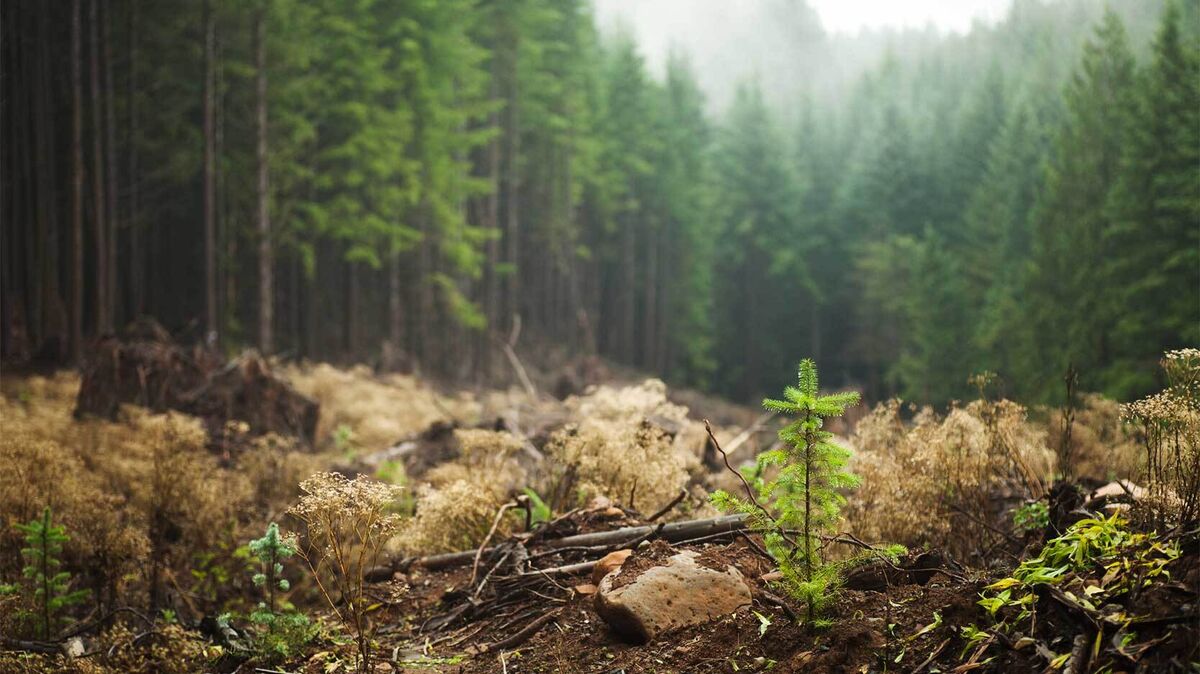
Secondary succession refers to the concept of an ecosystem reviving itself after all or a portion has been destroyed as the result of a natural or man-made event. The concept of secondary succession, also known as ecological succession, refers primarily to plant life coming back in the same place it grew prior to destruction. Reviewing a few examples of secondary succession in the natural world can help you better understand this concept.
Secondary Succession Examples
Secondary succession is different from primary succession, which would occur on new topsoil that did not previously have plant life growing in it. Secondary succession is a much more rapid process than primary succession because the soil and nutrients are already available. Because life previously existed in the soil, regrowth can occur without the need for new seeds or soil.
- The renewal of a forest after a fire: The fire itself destroys a majority of different types of trees and plant life. Because seeds and roots and other plant and tree parts remain in and on the soil, gradually the plants and trees begin to grow again. The forest eventually returns to the state of the original ecosystem.
- A forest renews after logging: A large number of trees were chopped down by loggers in order to create building materials. Over time, trees grow in the area that was deforested. Eventually, the area returns to being similar to its previous state.
- Tree regrowth after a hurricane: After hurricane-force winds sweep through forested regions, the result is often acre after acre of downed trees and other damaged vegetation. Over time, trees will start to grow in the area again. Scientists have found that secondary succession can lead to an increase in tree diversity.
- Plant and vegetation regrowth after a fire: On the island of Lawahii, several centuries ago, a fire erupted that caused the destruction of all plants and vegetation. Many years later, the plants and vegetation had grown back in, as the nutrients, seeds and soil remained.
- Renewal after plant diseases: A plant population can be very negatively affected by a variety of infectious plant diseases. If the entire population dies, but the soil and roots remain, it is possible for secondary succession to occur and for the population of those plants to return.
- Growing food crops in formerly diseased soil: Potato scab is a tuber disease that grows on potatoes and impacts the soil in which they grow. If this disease affects a large number of potatoes, the potatoes may not grow or may be harvested and thrown away. Over time, once the disease has been eradicated, healthy potatoes can grow again.
- The renewal of a crop after harvesting: A crop is harvested after it becomes ripe. Without new seeds being planted, some crops will regenerate the following year due to the plants and seeds that remained in the ground after harvesting. Gardeners refer to these plants that grow from unsown seeds as volunteers.
- Regrowth after farmland is flooded: A flood can ruin crops growing on farmland. However, because the soil remains after the waters recede, a natural secondary succession can occur over the course of many years. The vegetation that previously grew there can grow again.
- Coming back after pest overpopulation: Plants can be very susceptible to attack from pests, particularly if there is an overpopulation of those pests. When this occurs, the plant population in one area can be completely destroyed. However, when the pest overpopulation is resolved, the plants are able to live again and thrive in the soil in which they previously had lived.
These examples of secondary succession help to show exactly what secondary succession is and how it works in the real world.
Stages of Secondary Succession
Secondary succession is new growth, but it is not initial growth. Before secondary succession can occur, there has to have been previous growth in the same area. The stages that lead to secondary succession include:
- Growth exists.
- Existing growth is destroyed.
- Destruction stops. (For example, the fire goes out or is put out, the hurricane ends or the pest overpopulation problem is solved.)
- The soil remains.
- Time goes by.
- Regrowth begins.
- Fast-growing plants and/or trees are dominant for a while.
- Slower growing plants and/or trees come back and begin growing.
- Eventually, the area is fully populated with plant life again, though it may be more diverse or otherwise different than it was prior to being destroyed.
Expand Your Science Knowledge
Now that you are familiar with the concept of secondary succession and have reviewed some examples, it's a great time to continue learning more about science in the world around you. Start by exploring examples of chemical changes in everyday life. If that topic catches your attention, move on to common examples of solutions in everyday life. From there, discover common examples of bases.